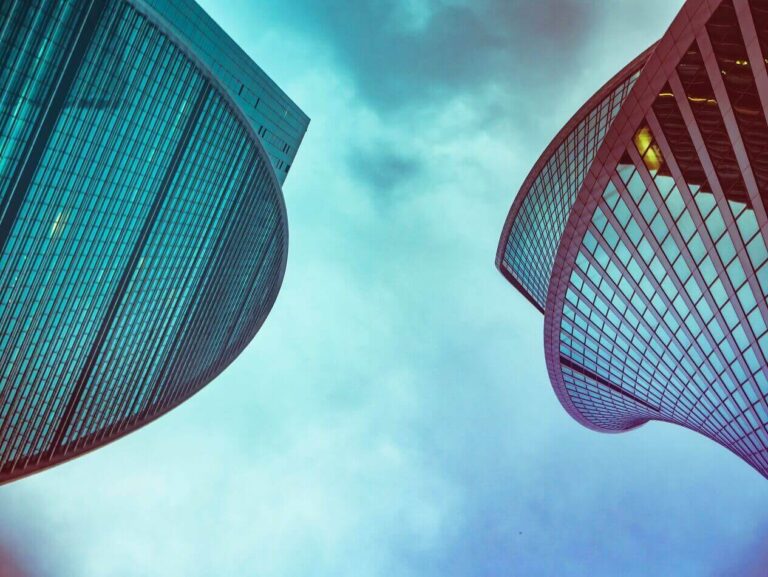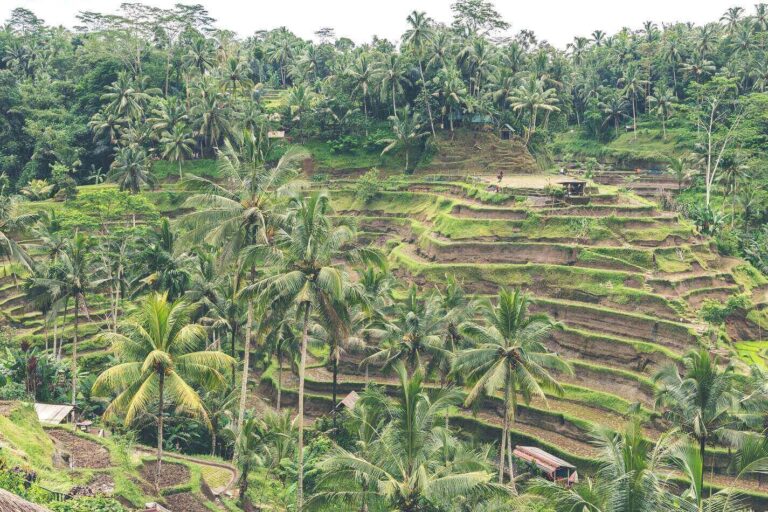can sustainable development work? when did it start?
what does sustainable development mean?
With people and countries becoming more and more aware of their environmental impact on this world, things like environmentally friendly diets and fashion have risen to the surface, but there is also another sustainability movement that we didn’t hear about until recently, that being, sustainable development, but, what does it really mean?
The United Nations Brundtland Commission defined the term as “development that meets the needs of the present without compromising the ability of future generations to meet their own needs.” This means that the development must take into account both environmental and economic concerns.
The term was first coined in the 1987 Brundtland Report, Our Common Future. This type of development is a way of meeting the needs of current generations without jeopardizing the ability of future generations to fulfill their own needs. It is often thought of as three interconnected pillars: economic development, social development, and environmental protection.
In conclusion, this type of development is one that ensures that a country will develop without damaging or polluting the environment unnecessarily in the process. Now that you know this, we will give you a little bit more insight into its history.
when did sustainable development start?
To understand what this term means and what it aims for, we have to take a look at its roots and understand how and why did it start, with this in mind, here is how and when sustainable development started:
It started in the late 1980s and early 1990s when the United Nations Conference on Environment and Development (UNCED) was held in Rio de Janeiro. The conference led to the creation of the 1992 Rio Declaration on Environment and Development, which included the now-famous principle of aiming to develop sustainably: “meeting the needs of the present generation without compromising the ability of future generations to meet their own needs”, as we said before.
The idea first started in the 1970s as a response to the growing awareness of the limits of the earth’s resources and the negative environmental impacts of economic development. Also, at this time there was a growing recognition of the need to balance economic development with social and environmental concerns. That led to the formation of the World Commission on Environment and Development, which produced the 1987 report Our Common Future, which we already have explained to you. This report popularized the term and outlined a framework for achieving it.
The concept has evolved over the years to encompass a broader range of issues, including environmental protection, economic development, social justice, and governance. Today, it is widely recognized as the need to balance environmental, social, and economic objectives in order to achieve long-term social and ecological stability.
This is how this new type of development goal started, with this now out of the way, we are going to talk about its future prospects and some of the examples of countries that are already trying to develop sustainably.

can sustainable development work?
The idea of developing without having a negative impact on the environment and future generations is great, on paper, but how does it really translate into reality? Can sustainable development work?
Yes, sustainable development can work. It is based on the idea of meeting the needs of the present generation without compromising the ability of future generations to meet their own needs. It can work by using resources in a way that does not damage or destroy the environment, creating economic opportunities that are environmentally and socially responsible, and by investing in social and economic equity.
To help in this mission, it is also needed of your help, and there is no single answer to how you can do so as sustainability is a complex and multi-faceted issue. However, some general things that can be done to promote sustainability include:
- Educating yourself and others about the importance of sustainability and ways to live more sustainably
- Supporting businesses and organizations that are committed to sustainable practices
- Reducing your own consumption and waste production
- Advocating for policy changes that promote sustainability
The way a country can develop sustainably depends on a variety of factors, including a country’s natural resources, its level of economic development, and its citizens’ willingness to change their behavior. However, some general steps that countries can take to develop sustainably include investing in renewable energy sources, protecting and restoring natural ecosystems, and promoting responsible consumption and production patterns. The citizens of a country also play a key role in sustainable development and must be willing to adopt sustainable lifestyles and make environmentally-friendly choices.
These were the reasons and ways that sustainable development can work, as you have seen here, your contribution is key in making this project happen, and one of the best things you can do is to inform yourself on the subject, which you are already doing by reading this article, kudos!
examples of sustainable development
You know what it means when it started, and how it can work, now is the time to show you a few of the examples of countries that are already making steps towards sustainability, and what we can learn from them, having said this, here are 5 countries that are embracing sustainable development:
- Costa Rica has set a goal to become the world’s first carbon-neutral country by 2021. In order to achieve this goal, Costa Rica has implemented a series of initiatives including planting trees, investing in renewable energy, and promoting energy efficiency. They have also created a carbon tax that is used to fund these projects. So far, these efforts have resulted in a decrease in emissions by 2.5% per year. However, in order to reach its goal, Costa Rica will need to continue these efforts and increase their rate of emissions reduction. A more realistic goal would be to become carbon-neutral by 2035, but the ambition is appreciated.
- India has pledged to get 40% of its electricity from renewable sources by 2030. India plans to get 40% of its electricity from renewable sources by 2030 through a mix of solar, wind, biomass, and small hydropower. So far, the government has been successful in meeting its targets for renewable energy capacity, adding nearly 7 GW of renewable energy in the past year. The government is also working on a new solar park policy to attract private investment and boost solar power capacity. It is predicted that by 2030, India will have the world’s third-largest installed capacity of renewable energy, which is good news for the fight against climate change.
- Sweden has set a goal to become completely fossil fuel-free by 2045. Sweden plans to become completely fossil fuel-free by 2045 by investing in renewable energy sources, such as solar and wind power, and by increasing energy efficiency. They have also set a goal to reduce their greenhouse gas emissions by 80-95% by 2050. So far, Sweden has been successful in reducing its emissions by 25% since 1990, and they are on track to reach its 2045 goal.
- China is investing heavily in renewable energy and aims to have the world’s largest solar power capacity by 2025. China is investing heavily in renewable energy because it is committed to reducing its carbon footprint and mitigating the effects of climate change. The country has set ambitious targets for solar power capacity and aims to have the world’s largest solar power capacity by 2025. China is also investing in other renewable energy sources such as wind and hydropower. However, the country still relies heavily on coal for its energy needs, and it is unclear how quickly China will be able to transition to a low-carbon economy. But its investment in renewable energy is a positive step in the right direction.
- The city of Oslo in Norway has set a goal to be completely carbon-neutral by 2030. This one is not really a country but deserves to mention in our list. The city of Oslo in Norway has set a goal to be completely carbon-neutral by 2030. The city has been working towards this goal for several years and has made significant progress in reducing its carbon emissions. In order to achieve its goal, the city has committed to several measures, including increasing the use of renewable energy, improving energy efficiency, and investing in green infrastructure.
そこにはは多くのもの私たちはできる learn from countriesそれは developing sustainably。 Oneはそれ彼らは持っているある clear visionのためにの futureそしては working towards long–term goals。彼らははまた making useの新しい technologiesそして approachesに protect their natural resources。 Additionally、 these countriesは engagingで international cooperationにヘルプ spread sustainable development practices aroundの world。 Sustainable developmentはの重要 goalのために全て countries、そして私たちはできる learnある lot from thoseそれは already making progress。
Now that you know this, it is time to spread awareness, by sharing information with your friend and family about sustainable goals, and to start making changes in your life yourself, so good luck!

まとめ
We hope you have learned a lot today about sustainable development goals and what you can do to help them, if you want to learn more about slow fashion and the problem with the fashion industry, be sure to check out the articles linked below or just check out our ブログ, where we have tons of different articles that you will love.
私たちは世界中の人々に教えることに興奮しています 🙂 また、ファストファッションが実際には何なのか、そしてそれが環境、地球、労働者、社会、経済にもたらす恐ろしい影響を本当に知っていますか?スローファッションまたはサステナブルファッション運動が何であるかを正確に知っていますか?この忘れ去られ知られていない、しかし非常に緊急かつ重要なテーマに関する記事をぜひ読んでみてください。「ファッションは持続可能になることができるのか?」を読むにはここをクリックしてください。、持続可能なファッション、エシカルファッション、スローファッションまたはファストファッション101 |私たちの地球をどのように破壊しているのかなぜなら、知識はあなたが持つことのできる最も強力な強みの1つである一方、無知はあなたの最大の弱点だからです。
ビッグサプライズもご用意しております!私たちのことをよりよく知っていただく権利をお客様に提供したいため、私たちが誰であるか、私たちの使命は何か、私たちが何をしているのか、私たちのチームについて詳しく説明する、慎重に専用の会社概要ページを用意しました。もの!この機会をお見逃しなく、ここをクリックして確認してください。また、次のこともお勧めします。私たちのものを見てくださいピンタレスト、ここでは、毎日のサステナブルなファッション関連のコンテンツ、衣類のデザイン、その他きっと気に入っていただけるものをピン留めしていきます。
